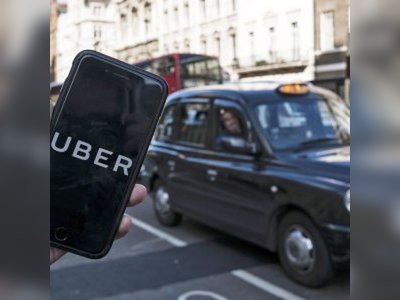MTR, university count losses after month of violence
For the millions of Hongkongers who live in the city’s northern New Territories, the daily commute to their offices in Kowloon or on Hong Kong Island via MTR Corp’s East Rail Line usually slows to a crawl whenever some radicals hurl debris on to the trunk route’s open-air tracks in flash-mob attacks.
For two days in mid-November, the city’s rail operator was forced to shut the entire 41.5-kilometer East Rail Line, which links a main border checkpoint to a busy interchange on the Victoria Harbor waterfront, after a scrum of rioters locked down a footbridge straddling the line near University Station and started lobbing whatever they could find, including bicycles and fire extinguishers, on to the tracks beneath.
Transportation was snarled, with numerous riders stranded for hours and later being told to exit the trains and trudge along the tracks or through grass to reach the nearest station.
The East Rail Line’s University Station serving the nearby Chinese University of Hong Kong was almost torn apart and burned down during the two days of service shutdown when black-clad protesters also overran the CUHK campus.
Even after MTR scrambled to clear the tracks of foreign objects to resume service on the line the following day, trains had to slow to walking speed for safety reasons near University Station because of extensive sabotage to signaling and marshaling equipment that is still awaiting repair. Security staff are seen patrolling the station’s platforms as the rail operator now hires Gurkhas to protect its stations and properties, as Hong Kong’s protracted unrest has stretched police manpower to the limit.
MTR noted in a statement last month that getting the trashed University Station back to working order would be like rebuilding it in toto. Some financial analysts now fear major losses and the rail giant’s provisions for repairs and hiring additional guards may eat up a big chunk of the firm’s net revenue for the current financial year.
Further down south at Kowloon Tong Station, a busy interchange on the East Rail Line in Kowloon, an exit to a nearby upmarket shopping arcade has also been closed since mid-November, after the mall joined a growing list of retailers and businesses hit by the turmoil.
Mapletree, a realty subsidiary of Singapore’s state-owned Temasek Holdings that owns the 120,000-square-meter Festival Walk after it outbid competitors and bought the trophy Hong Kong property from the British conglomerate Swire in 2011, now had to close the sprawling mall indefinitely for repairs and maintenance and will miss the normally brisk business during the Christmas and New Year season. This is after protesters rampaged through its floors shattering glass, scrawling abusive graffiti and even setting a giant Christmas tree several floors high on fire on November 12. Apple also had to shut one of its stores in the city because of the closure of the mall.
Vandals vented their anger on the mall because its security guards had failed to stop a police raid the previous day, which led to fierce scuffles and running battles between protesters and officers in luxury boutiques and shops, with some alleging they were collared and beaten up by police.
Mapletree declined to disclose how much it would have to stump up for the repairs as it was still counting the losses, but its share price dropped on the news on the following trading days. Local papers say the damage and lost business as well as compensation for tenants could well be in the hundreds of millions of Hong Kong dollars.
Opposite Hung Hom Station, the southern end of the East Rail Line, the campus of the Hong Kong Polytechnic University is also in shambles after the learning hub descended into anarchy and was subsequently fortified by more than a thousand hardcore protesters last month to stockpile firebombs, makeshift bows and arrows and metal balls, triggering a two-week police siege under hails of teargas and rubber bullets day in and day out.
The PolyU campus still reeks of scorched and putrid smells with its lecture halls, libraries and canteens strewn with debris, tissue and food remnants, after the police lifted their cordon, hauled weapons, explosives and flammable fluids offsite, and handed control back to the university’s management.
Lam Tai-fai, chairman of the PolyU council, told reporters that thorough checks must be conducted to ensure the functionality and safety of power-supply and mechanical systems, demanding that the government foot the hefty bill for repairs, as the school was made a scapegoat amid the chaos and officials’ failure to address people’s demands.
Lam also highlighted the loss of intellectual property and research data after many labs were broken into, and some professors told him that their lab mice had been starved for days and they would have to redo experiments.
PolyU has restricted access to its battered campus to authorized surveyors, cleaners and restoration workers only, after it decided to cut short the current semester and pulled students and staff out of the campus in early November.



















